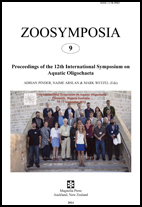Issue:
Vol. 9: 12 June 2014
Type: Article
Published: 2014-06-12
Page range: 36–43
Abstract views: 463
PDF downloaded: 430
Bathymetric distribution of aquatic Oligochaeta in Lake Kizaki, Central Japan
Department of Applied Biology, Shinshu University, Ueda, Nagano, 386-8567, Japan
Department of Applied Biology, Shinshu University, Ueda, Nagano, 386-8567, Japan
)Division of Science for Inland Water Environment, Institute of Mountain Science, Shinshu University, Suwa, Nagano, 392-0027, Japan
aquatic Oligochaeta
density
bathymetric distribution
Lake Kizaki
Tubifex tubifex (Müller
1774)

